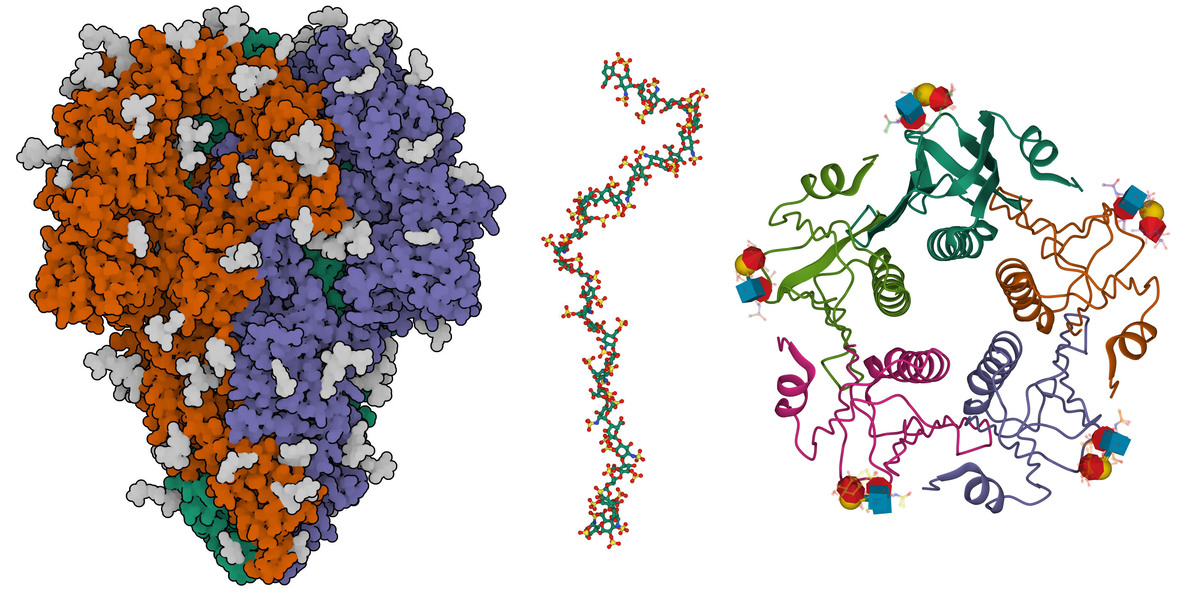News
Guide to Understanding PDB Data: Carbohydrates
06/15 
 Figure 2. Examples of carbohydrates in the PDB: the coronavirus spike protein (left; 7kip) with many sites of glycosylation in gray; a fragment of heparin (center; 3irl), shown with a ball-and-stick representation; and cholera toxin bound to a small fragment of O-type blood glycans (right, 5elb), with the glycans shown using SNFG representation. More on carbohydrates at PDB-101.
Figure 2. Examples of carbohydrates in the PDB: the coronavirus spike protein (left; 7kip) with many sites of glycosylation in gray; a fragment of heparin (center; 3irl), shown with a ball-and-stick representation; and cholera toxin bound to a small fragment of O-type blood glycans (right, 5elb), with the glycans shown using SNFG representation. More on carbohydrates at PDB-101.The constantly-growing PDB is a reflection of the research that is happening in laboratories across the world. This can make it both exciting and challenging to use the database in research and education.
PDB-101's Guide to Understanding PDB Data was created to help users navigate through the contents of the archive without having a detailed background in structural biology.
Topics cover biological assemblies, molecular graphics programs, R-value and R-free, and more.
A new chapter has been added to help users examine the carbohydrates are represented in the PDB archive. Topics in this article include:
- General Overview
- Importance of Carbohydrates in Biology
- Representing Carbohydrates
- How Carbohydrates are Specified in PDB Entries
- Finding carbohydrates in the archive
- The "Oligosaccharides" Section of the Structure Summary Page
- Viewing Carbohydrates in Mol*












